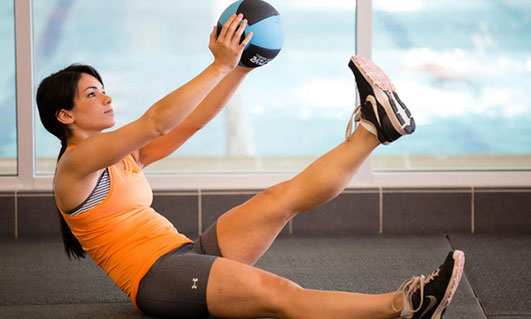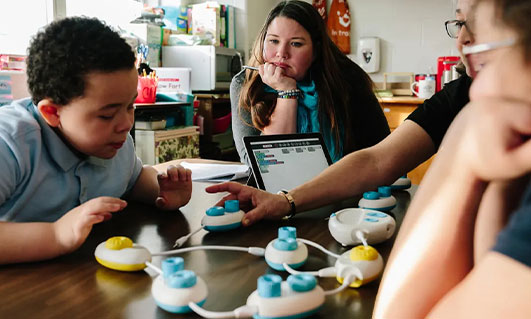
Maintaining a healthy diet is essential for overall well-being, but for visually impaired individuals, managing portion sizes can present unique challenges. Portion control is vital for maintaining a balanced diet, managing weight, and preventing chronic health conditions. This blog will provide practical tips and strategies to help visually impaired individuals practice effective portion control, empowering them to make healthier choices.
1. Understanding Portion Control
Portion control refers to the amount of food you choose to eat in one sitting. It’s essential to understand that portion sizes can differ from serving sizes, which are standardized amounts often listed on packaging. Learning to identify appropriate portion sizes can help visually impaired individuals manage their nutrition effectively.
2. Use Measuring Tools
Using measuring tools can simplify portion control. Here are some adaptive tools that can help:
- Talking kitchen scales: These scales provide audible measurements, making it easy to weigh food accurately.
- Measuring cups and spoons with tactile markers: These tools can help visually impaired individuals measure ingredients without relying solely on sight. Look for cups and spoons with braille labels or tactile indicators for easy identification.
- Portion control plates: Some plates are designed with sections that indicate appropriate serving sizes for different food groups. These visual cues can help visually impaired individuals serve themselves balanced meals.
3. Develop a Consistent Routine
Establishing a consistent eating routine can aid in portion control. Here are some tips to create a structured eating pattern:
- Set regular meal and snack times: Eating at the same times each day can help regulate appetite and prevent overeating.
- Plan meals in advance: Preparing meals ahead of time can help manage portion sizes more effectively. Consider batch cooking and portioning meals into containers that are easy to identify by touch.
- Avoid distractions during meals: Eating mindfully, without distractions like TV or smartphones, can help individuals focus on their portion sizes and hunger cues.
4. Listen to Your Body
Learning to recognize hunger and fullness cues is crucial for effective portion control. Here are some strategies to enhance body awareness:
- Eat slowly: Taking time to chew food thoroughly and savor flavors can help individuals better gauge their hunger and fullness levels.
- Use mindful eating techniques: Encourage individuals to focus on the taste, texture, and aroma of their food. This mindfulness can enhance the eating experience and improve portion control.
- Keep a food journal: Maintaining a record of meals and portion sizes can help identify patterns in eating habits. Note how certain foods make you feel and how they align with hunger and fullness cues.
5. Utilize Adaptive Technology
Technology can play a significant role in managing portion control. Various apps and devices are designed to assist with meal planning and tracking food intake:
- Nutrition tracking apps: Some apps allow users to log their meals, helping them stay aware of portion sizes and nutritional content. Look for apps that are compatible with screen readers.
- Voice assistants: Smart home devices can assist with meal preparation by providing cooking times, recipes, and portion suggestions through voice commands.
6. Portioning Techniques
Understanding different portioning techniques can further support healthy eating:
- Visual cues: While visually impaired individuals may not rely on sight, understanding common portion sizes can be beneficial. For example, a serving of meat is often about the size of a palm, and a serving of grains might resemble a fist.
- Use your hands: Many visually impaired individuals find it helpful to use their hands as a measuring tool. For instance, a handful of nuts can indicate a portion, while a cupped hand can suggest a serving of cooked rice.
7. Seek Support and Education
Joining a support group or participating in nutrition workshops can provide valuable resources for visually impaired individuals looking to improve their portion control skills. Community organizations and local health departments may offer classes or resources tailored specifically for visually impaired individuals, focusing on healthy eating habits and nutrition education.
8. Consult a Registered Dietitian
For personalized guidance, consider consulting a registered dietitian who has experience working with visually impaired individuals. They can offer tailored advice on portion control, meal planning, and overall nutrition based on individual needs and goals.
Conclusion
Portion control is an essential aspect of healthy living that can be successfully managed by visually impaired individuals with the right tools, techniques, and support. By understanding portion sizes, using adaptive tools, listening to their bodies, and seeking education, visually impaired individuals can cultivate healthier eating habits and enhance their overall well-being.
Empowering individuals to take charge of their nutrition through effective portion control promotes independence and confidence in making healthier food choices. Whether through adaptive technology, structured routines, or community support, these strategies pave the way for a more balanced and fulfilling relationship with food.





